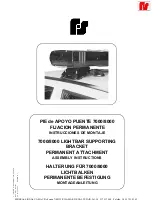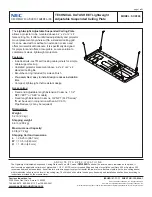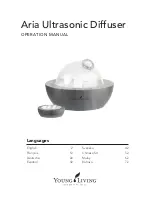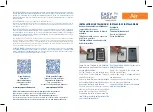
30
CAUTION!
Risk of injury from compressed air escaping from the torch body coupling, flying de
-
bris, and sharp components.
► Always wear the following protective equipment when carrying out the work described
below:
Safety glasses with side guards
Gloves - electrically insulating and heat protective
Protective helmet
Operating Per
-
sonnel, Mainte
-
nance Personnel
NOTE!
In all situations, the device must only ever be operated by one person.
In addition, make sure that there are no other people in the device’s operating area while
it is in operation.
NOTE!
In all situations, the device must only ever be maintained by one person.
In addition, make sure that there are no other people in the device’s operating area while
work on it is ongoing.
Setup Regula
-
tions
NOTE!
Always integrate the torch body change station into a higher-level safety system in
a secured area.
If this area has to be accessed for tooling or maintenance work, ensure that:
► The entire system is shut down for the duration of access to this area.
► The system remains shut down to prevent unintended operation, for example, as a re
-
sult of a control error.
The device has been tested according to protection class IP 23. This means:
-
Protection against solid foreign bodies larger than Ø 12.5 mm (0.49 in.)
-
Protection against spraywater up to an inclined angle of 60°
Dust
Make sure that metal dust cannot accumulate directly on the device (e.g. during grinding
work).
Specifications for
the Compressed
Air Supply
The following specifications for the compressed air supply must be fulfilled to ensure that
the torch body change system functions correctly:
-
Compressed air free of oil
-
Compressed air free of dust – no contaminants larger than 5 µm
-
Compressed air free of water
-
Compressed air supply of 6.00 bar (87.02 psi)
-
Internal diameter of the compressed air lines at least 5.5 mm (0.22 in.)
















































